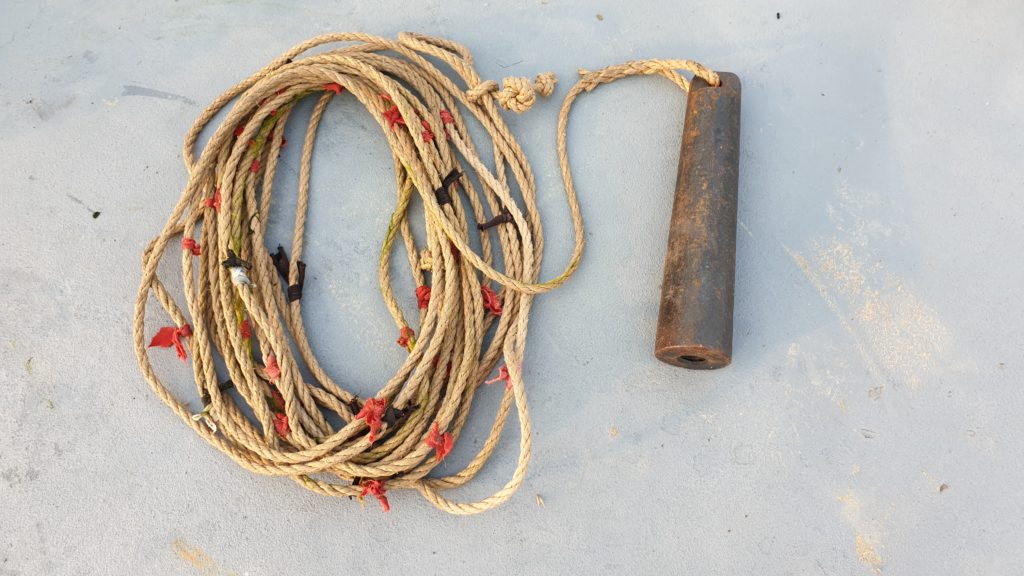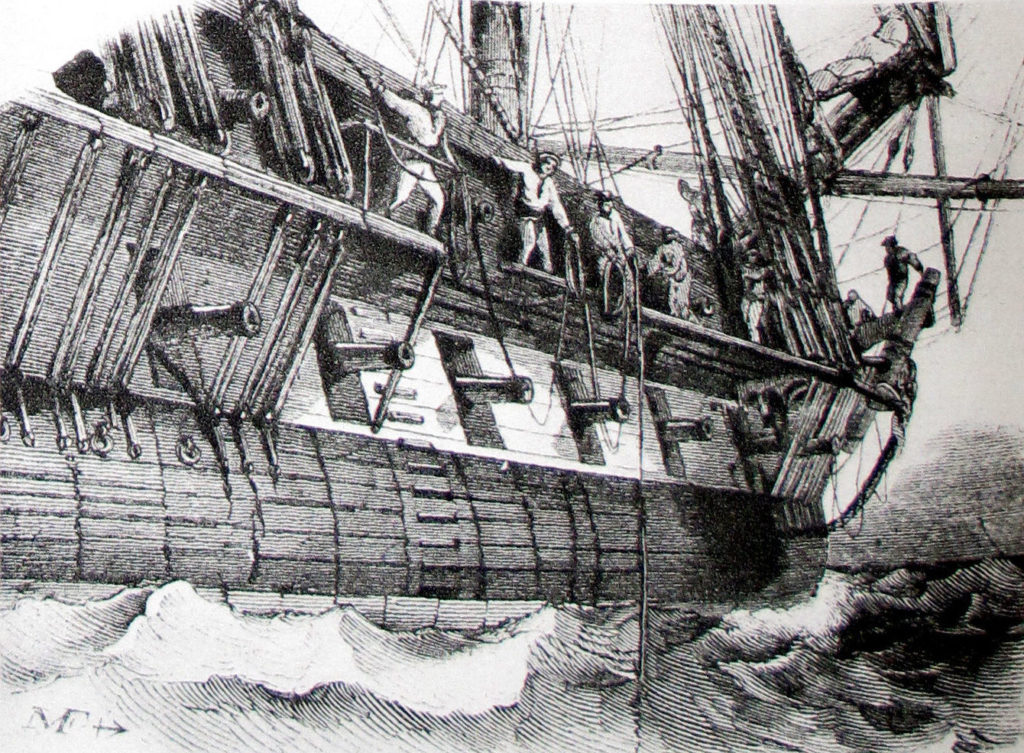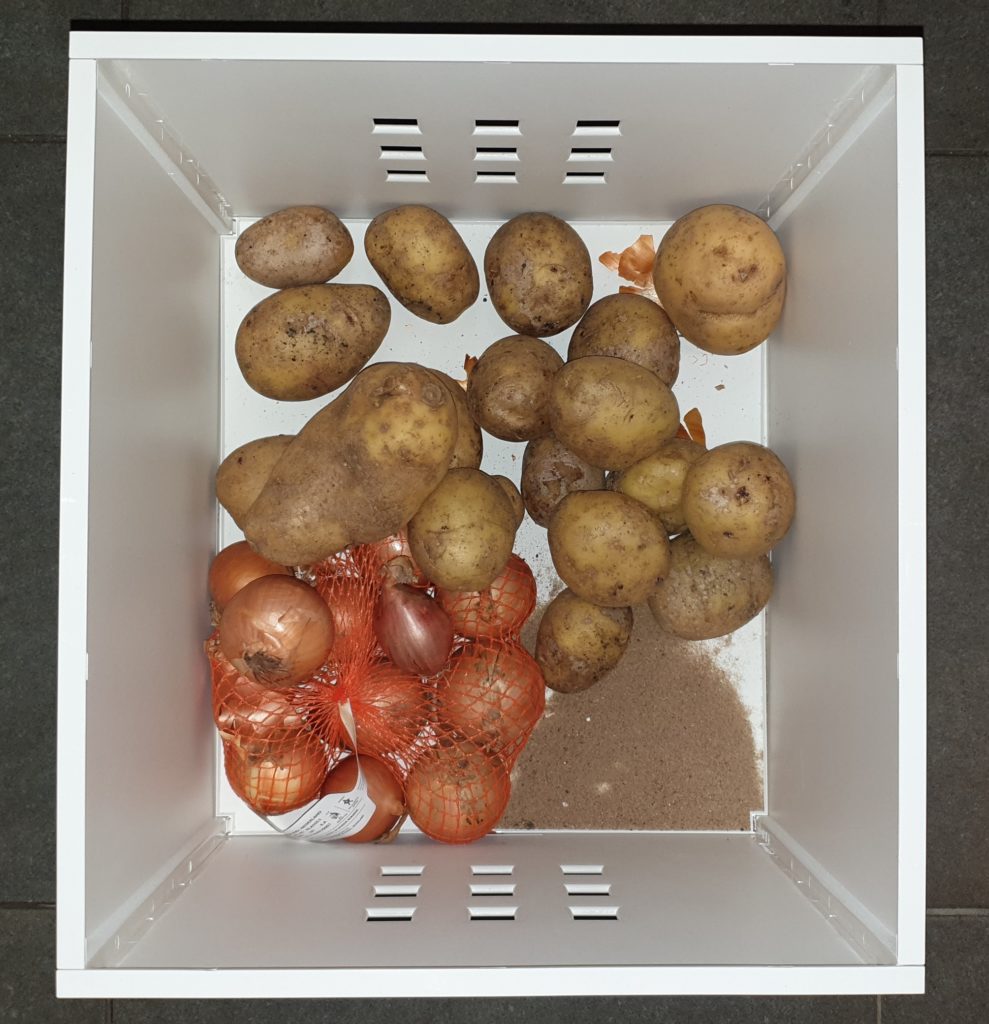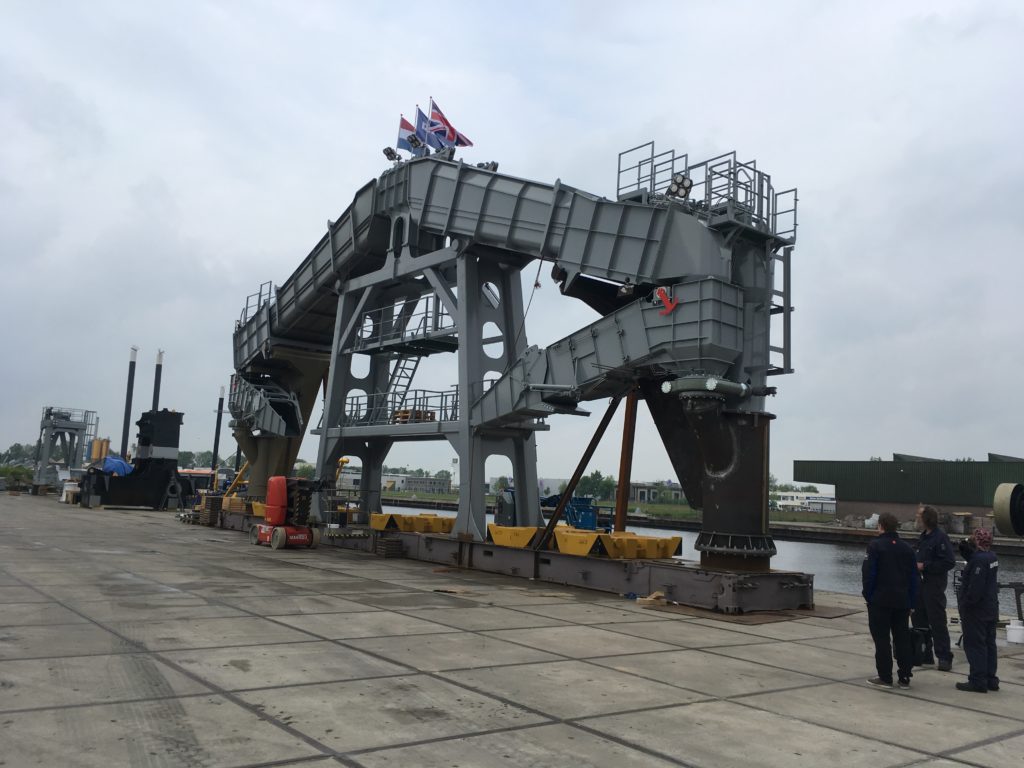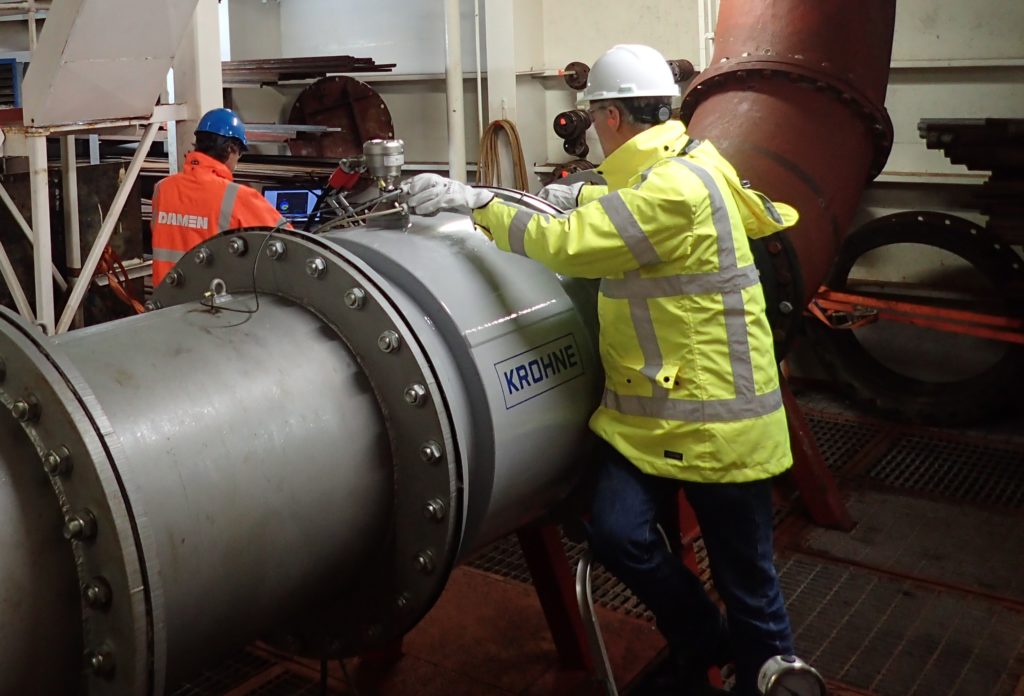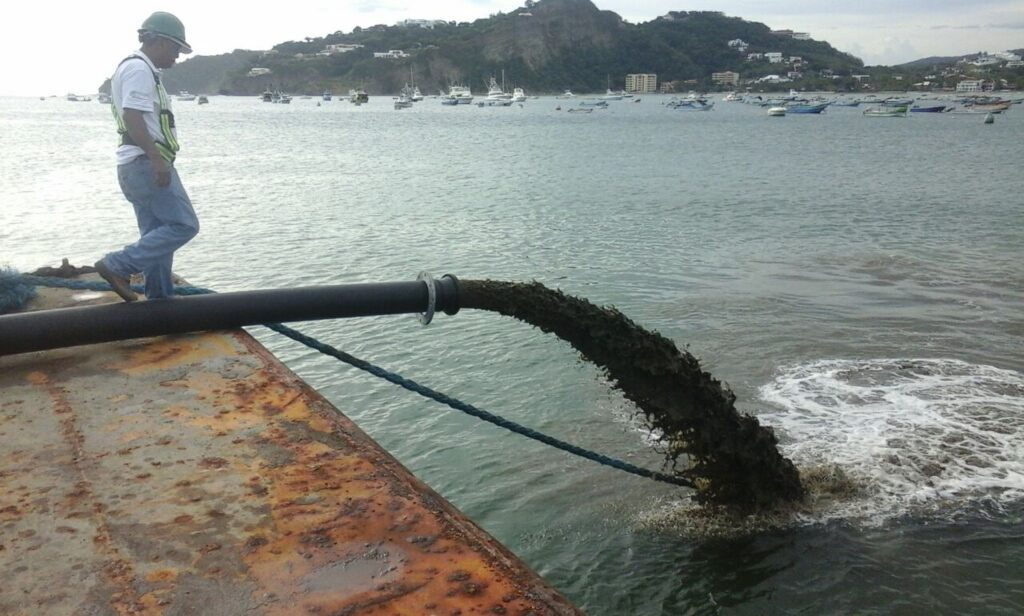
Solving something at the end of the pipe is usually a less desired approach. However, in dredging, it is the place where the valuable stuff is delivered, it might be a good place to start monitoring your process. Let me explain this to you by going back to latest discussed exhibit at the Damen Dredging Experience1.

You might have observed in the pictures of the pump power exhibit, that the velocity of the water flow is indicated by the parabolas of the trajectory. The arc of water is bound by gravity and obeys this trajectory always; independent of the density of the mixture. The two equations of motion can be combined, where the time parameter falls away and the height for a certain distance is only depending on the initial horizontal velocity2. As such, it is fairly accurate indication of the pipe flow. The calculation is universally applicable on earth and the results can be presented in a very simple graph to take with you. Every parabola is labelled with the corresponding horizontal velocity.

The above example is a straightforward method to measure the mixture velocity. The US Geological Survey even extended this approach as a standard method to measure the production of wells3. The resulting nomogram has a slightly different layout, as it is intended for finding the production instead of the velocity. For production planning, this will be useful. For monitoring your dredging process, the velocity might be more important. Both approaches of this elegant method do have the benefit, that there is no obstruction needed as in the case of an orifice measurement4.

There is an unconfirmed anecdote that my old professor de Koning started his career as a velocity measurer. In the old days, when he was working as a twelve year old boy with the dredging company of his father. He was assigned to keep watch at the end of the pipe and monitor the mixture pouring out. He had a simple beam with a plumb bob. The beam was moved along the top of the pipe, until the plumb bob was touching the arc of mixture. On the beam were two markings. When the beam was moved in and passed the first mark, the mixture velocity was too low and a red warning flag had to be displayed. If the beam had to move out and the mixture velocity was too high at the second mark, a green flag had to be flown. There was also another white flag, in case only water came on the reclamation area. With this very simple setup, the dredge master could check through his binoculars what the state of the dredging process was.

They were clever in those days. But the physics still apply. So, even today, one might have a situation, where there is no electronic velocity measurement available (broken, not supplied, not (yet) purchased) and you have to push the limits of the operating envelope of the dredging process. Then, there is probably always somebody around that might be appointed volunteer to be head of the velocity measurement crew. Who knows, he might have a bright future in the dredging academia.
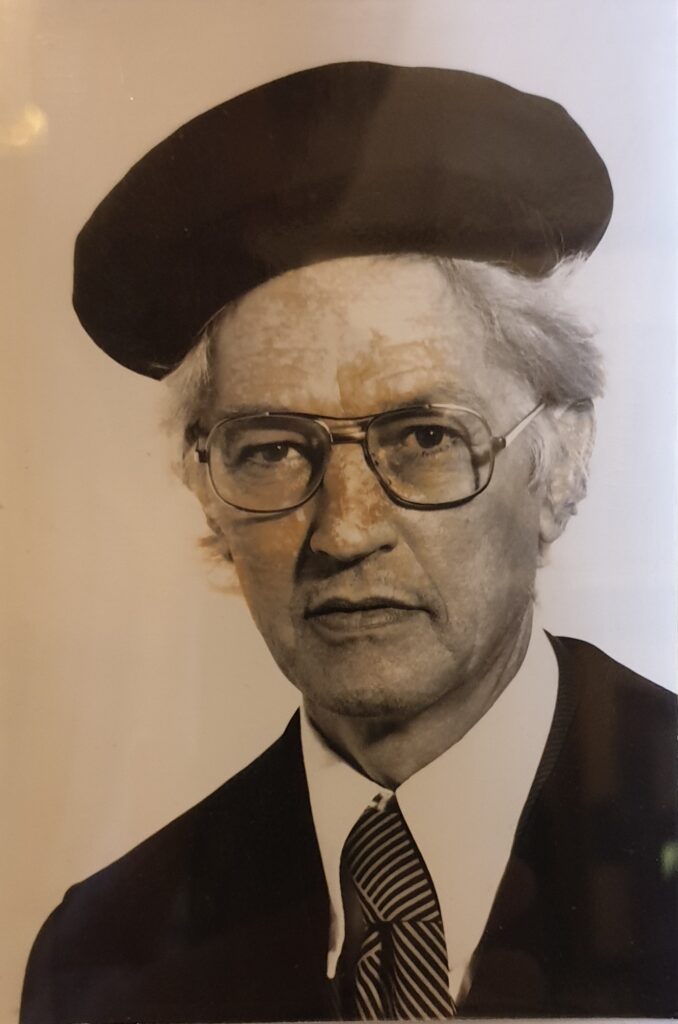
References
- Presenting Pump Power Peculiarities, Playing With Pumps And Pipes, Discover Dredging
- Projectile motion, Wikipedia
- Estimating discharge from a pumped well by use of the trajectory free-fall or jet-flow method, US Geological Survey
- ISO 5167 Measurement of fluid flow by means of pressure differential devices inserted in circular cross-section conduits running full, ISO
